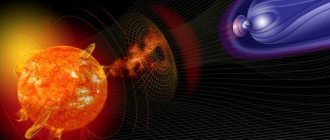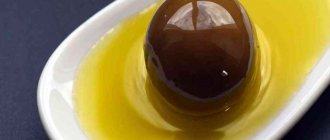In several regions of Russia this week there is a high and very high index of solar ultraviolet radiation. Earlier, the scientific director of the Hydrometeorological Center, Roman Vilfand, . According to him, a very high and high UV index will be recorded in the North Caucasus and Southern Federal Districts, as well as in the south of Siberia. A high UV index will be in most regions of the Central Federal District.
The meteorologist explained the increased level of ultraviolet radiation by the summer solstice period and weather conditions. “The air is dry now: there is no dust, because it has already settled, and there is no moisture either. In conditions where there are few clouds, the ultraviolet index is high,” Vilfand explained to RIA Novosti.
The difference between ultraviolet radiation and infrared radiation
Ultraviolet radiation, like infrared radiation, is an electromagnetic wave. It is these radiations that limit the spectrum of visible light on both sides. Both types of rays are not perceived by the visual organs. The existing differences in their properties are caused by the difference in wavelength.
The range of ultraviolet radiation, located between visible and x-ray radiation, is quite wide: from 10 to 380 micrometers (µm).
The main property of infrared radiation is its thermal effect, while the most important feature of ultraviolet radiation is its chemical activity. It is thanks to this feature that ultraviolet radiation has a huge impact on the human body.
General concept of ultraviolet irradiation, types of devices, mechanism of action, indications
Ultraviolet irradiation (UVR) is a physiotherapeutic procedure that is based on the effect of ultraviolet rays on tissues and organs. The effect on the body may differ when using different wavelengths.
UV rays have different wavelengths:
- Long wavelength (DUV) (400–320 nm).
- Mid-wave (MW) (320–280 nm).
- Short wavelength (SWF) (280–180 nm).
For physiotherapy, special devices are used. They generate ultraviolet rays of different lengths.
UV-devices for physiotherapy:
- Integral. Generate the entire spectrum of ultraviolet radiation.
- Selective. They produce one type of ultraviolet radiation: short-wave, a combination of short- and medium-wave spectra.
| Integral | Selective |
| ОУШ-1 (for individual use, local irradiation, general effects on the body); OH-7 (suitable for the nasopharynx) OUN 250, OUN 500 - desktop type for local use). The source of irradiation is a mercury-quartz tubular lamp. Power can be different: from 100 to 1000 W. | Shortwave spectrum (SWF). Sources of bactericidal action: OBN-1 (wall-mounted), OBP-300 (ceiling-mounted). Used for disinfecting premises. Short rays for local exposure (irradiation of skin, mucous membranes): BOP-4. The mid-wave spectrum is generated by luminescent erythema sources with ultraviolet-transmitting glass: LE-15, LE-30. Long wave sources (LW) are used for general effects on the body. |
In physiotherapy, ultraviolet irradiation is prescribed for the prevention and treatment of various diseases. The mechanism of exposure to ultraviolet radiation is as follows: metabolic processes are activated, the transmission of impulses along nerve fibers improves. When UV rays come into contact with the skin, the patient develops erythema. It looks like redness of the skin. The invisible period of erythema formation is 3-12 hours. The resulting erythematous formation remains on the skin for several more days; it has clear boundaries.
The long-wave spectrum does not cause very pronounced erythema. Medium-wave rays are able to reduce the number of free radicals and stimulate the synthesis of ATP molecules. Short UV rays very quickly provoke an erythematous rash.
Small doses of medium and long UV waves are not capable of causing erythema. They are needed for a general effect on the body.
The benefits of small dosages of UV irradiation:
- Enhances the formation of red blood cells and other blood cells.
- Increases the function of the adrenal glands and the sympathetic system.
- Reduces the formation of fat cells.
- Improves the performance of the name system.
- Stimulates immune reactions.
- Normalizes blood glucose levels.
- Reduces the amount of blood cholesterol.
- Regulates the excretion and absorption of phosphorus and calcium.
- Improves heart and lung function.
Local radiation helps stimulate immune reactions in the area where the rays hit, increases blood flow and lymph outflow.
Dosages of irradiation that do not provoke the appearance of redness have the following properties: increase regenerative function, enhance tissue nutrition, stimulate the appearance of melanin in the skin, increase immunity, stimulate the formation of vitamin D. Higher doses that cause erythema (usually AF) can kill bacterial agents, reduce the intensity of pain, reduce inflammation in the mucous membranes and skin.
Indications for physiotherapy
| Overall Impact | Local impact |
| Stimulation of immunity in immunodeficiencies. Prevention and treatment of rickets (vitamin D deficiency) in children, pregnancy, and breastfeeding. Purulent lesions of the skin and soft tissues. Increasing immunity in chronic processes. Increased blood cell production. Replacement therapy for UVR deficiency. | Joint diseases. Pathologies of the respiratory system. Bronchial asthma. Surgical purulent wounds, bedsores, burns, frostbite, abscesses, erysipelas, fractures. Extrapyramidal syndrome, demyelinating pathologies, head injuries, radiculopathy, various types of pain. Stomatitis, gingivitis, periodontal disease, infiltrative formation after tooth extraction. Rhinitis, tonsillitis, sinusitis. Cracked nipples in women, acute gynecological inflammatory diseases. Weeping umbilical wound in newborns, diathesis with exudation, rheumatoid diseases, pneumonia, skin damage by staphylococcus. Psoriasis, eczematous rashes, purulent skin lesions in dermatological patients. |
Contraindications to irradiation are:
- Tumor process.
- Hyperthermia.
- Infectious diseases.
- Overproduction of thyroid hormones.
- Lupus erythematosus.
- Hepatic and renal dysfunction.
The effect of ultraviolet radiation on humans
The biological effect produced by different ultraviolet wavelengths has significant differences. Therefore, biologists divided the entire UV range into 3 sections:
- UV-A rays are near ultraviolet;
- UV-B - medium;
- UV-C - far.
The atmosphere that envelops our planet is a kind of shield that protects the Earth from a powerful stream of ultraviolet radiation coming from the Sun.
Moreover, UV-C rays are absorbed by ozone, oxygen, water vapor and carbon dioxide by almost 90%. Therefore, the Earth's surface is mainly reached by radiation containing UV-A and a small proportion of UV-B.
Shortwave radiation is the most aggressive. The biological effect of short-wave UV radiation upon contact with living tissue could have a rather destructive effect. But fortunately, the planet's ozone shield protects us from its effects. However, we should not forget that the sources of rays in this particular range are ultraviolet lamps and welding machines.
The biological effects of long-wave UV radiation are predominantly erythemal (causing redness of the skin) and tanning effects. These rays have a fairly gentle effect on the skin and tissues. Although there is an individual dependence of the skin on UV exposure.
Eyes can also be damaged when exposed to intense ultraviolet light.
Everyone knows about the effect of ultraviolet radiation on humans. But mostly this is superficial information. Let's try to cover this topic in more detail.
The benefits of ultraviolet light
1. Everyone knows that ultraviolet radiation is necessary for the formation of vitamin D, which, in turn, is involved in the metabolism of calcium and phosphorus. This is important not only for the formation of bone tissue, phosphorus is part of phospholipids, and they are involved in the construction of membranes of all cells of the body. True, doctors have calculated that to produce the required amount of vitamin D, it is enough to expose your hands and face to the sun for 15 minutes. per day, i.e. deficit does not threaten us (theoretically).
3. Undoubtedly, moderate doses of UV radiation have a beneficial effect on the immune system.
4. And finally, no one has yet canceled the bactericidal effect of UV radiation.
Regarding tanning, this seems to be a side effect. Here it is: UV-A easily penetrates the skin and deeply, they cause darkening of ready-made melanin. This tan is quick and unstable. UVA does not cause burns, but initiates the process of photoaging of the skin. UV-B stimulates the production of new melanin and its subsequent darkening. This tan takes longer to acquire and also lasts longer, but UV-B can cause burns, and this is harmful.
How does ultraviolet radiation affect the skin (ultraviolet mutagenesis)
Chronic sun starvation leads to many negative consequences. Just like the other extreme - the desire to acquire a “beautiful, chocolate body color” due to prolonged exposure to the scorching rays of the sun. How and why does ultraviolet radiation affect the skin? What are the dangers of uncontrolled exposure to the sun?
Naturally, redness of the skin does not always lead to a chocolate tan. Darkening of the skin occurs as a result of the body's production of the coloring pigment - melanin, as evidence of our body's struggle with the traumatic effect of the UV part of solar radiation. Moreover, if redness is a temporary condition of the skin, then the loss of its elasticity, the proliferation of epithelial cells in the form of freckles and age spots is a permanent cosmetic defect. Ultraviolet light, penetrating deeply into the skin, can cause ultraviolet mutagenesis, that is, damage to skin cells at the gene level. Its most dangerous complication is melanoma, a skin tumor. Metastasis of melanoma can be fatal.
Skin protection from UV radiation
Is there any protection for skin from UV radiation? To protect your skin from the sun, especially on the beach, you just need to follow a few rules.
- Spending time in the open sun should be moderate and rational; a light tan obtained at certain hours has photoprotective properties.
- Using sunscreen should be an integral part of your beauty routine. When choosing a UV protection product, make sure it protects your skin from both UVA and UVB.
- Use foods rich in antioxidants and vitamins C and E in your diet.
To protect the skin from ultraviolet radiation, it is necessary to use specially selected clothing.
How is UV radiation used in medical practice?
In medicine, there is the concept of “ultraviolet fasting,” which can occur in the event of prolonged avoidance of sunlight. In this case, unpleasant pathologies may arise, which can be easily avoided by using artificial ultraviolet sources.
Their small exposure can compensate for the winter vitamin D deficiency.
In addition, such therapy is applicable in case of joint problems, skin diseases and allergic reactions.
Using UV radiation you can:
- Increase hemoglobin, but reduce sugar levels;
- Normalize the functioning of the thyroid gland;
- Improve and eliminate problems of the respiratory and endocrine systems;
- Using installations with ultraviolet radiation, premises and surgical instruments are disinfected;
- UV rays have bactericidal properties, which is especially useful for patients with purulent wounds.
IMPORTANT! Whenever using such radiation in practice, it is worth familiarizing yourself with not only the positive, but also the negative aspects of their impact. The use of artificial, as well as natural, UV radiation as treatment is strictly prohibited for oncology, bleeding, stage 1 and 2 hypertension, and active tuberculosis.
How does ultraviolet light affect the eyes (electrophthalmia)
Another manifestation of the negative impact of ultraviolet radiation on the human body is electroophthalmia, that is, damage to eye structures under the influence of intense ultraviolet radiation.
The damaging factor in this process is the mid-wave range of ultraviolet waves.
electroophthalmia
This often occurs under the following conditions:
- while observing solar processes without special devices;
- in bright, sunny weather at sea;
- while staying in a mountainous, snowy area;
- when quartzing premises.
With electroophthalmia, there is a burn of the cornea. Symptoms of such a lesion are:
- increased lacrimation;
- pain;
- photophobia;
- redness;
- swelling of the epithelium of the cornea and eyelids.
Fortunately, the deep layers of the cornea are usually not affected, and after the epithelium heals, vision is restored.
First aid for electroophthalmia
The symptoms described above can cause a person not only discomfort, but also real suffering. How to provide first aid for electroophthalmia?
The following steps will help:
- rinsing eyes with clean water;
- instillation of moisturizing drops;
- Sunglasses.
Compresses made from wet black tea bags and raw, grated potatoes are excellent for relieving pain in the eyes.
If the help does not have an effect, consult a doctor. He will prescribe therapy aimed at restoring the cornea.
All these troubles could be avoided by using sunglasses with a special marking - UV 400, which will completely protect your eyes from all types of ultraviolet waves.
Method of ultraviolet irradiation
Before treatment, the physiotherapist must decide on the type of rays. A prerequisite is to calculate the radiation dose to the patient. The load is measured in biodoses. The number of biodoses is calculated using the Gorbachev-Dahlfeld method. It is based on the speed of formation of redness of the skin. One biodose can cause minimal redness from a distance of 50 cm. This dosage is erythemal.
Erythemal doses are divided into:
- small (one or two biodoses);
- medium (three to four biodoses);
- high (five to eight biodoses).
If the radiation dose is more than eight biodoses, then it is called hypererythemal. Irradiation is divided into general and local. General may be intended for one person or a group of patients. Such radiation is produced by integrated devices or long-wave sources.
Children must be irradiated very carefully using general UV radiation. For children and schoolchildren, an incomplete biodose is used. Start with the smallest dosage.
With the general exposure of newborns and very weak babies to UV rays, 1/10–1/8 of a biodose is exposed at the initial stage. For schoolchildren and preschoolers, 1/4 of the biodose is used. The load is increased over time to 1 1/2-1 3/4 biodoses. This dosage remains for the entire treatment phase. Sessions are held every other day. 10 sessions are enough for treatment.
During the procedure, the patient must be undressed and placed on the couch. The device is placed at a distance of 50 cm from the surface of the patient’s body. The lamp should be covered with a cloth or blanket along with the patient. This ensures that the maximum radiation dosage is received. If you do not cover it with a blanket, then some of the rays emanating from the source are scattered. The effectiveness of therapy will be low.
Local exposure to ultraviolet radiation is carried out by devices of a mixed type, as well as those emitting short waves of the UV spectrum. During local physiotherapy, it is possible to influence reflexogenic zones, irradiate with fractions, fields, near the site of damage.
Local irradiation often causes redness of the skin, which has a healing effect. In order to properly stimulate the formation of erythema, after its appearance, the following sessions begin after it fades. The intervals between physical procedures are 1-3 days. The dosage in subsequent sessions is increased by a third or more.
For intact skin, 5-6 physiotherapy procedures are sufficient. If there are purulent lesions or bedsores on the skin, then up to 12 sessions need to be irradiated. For mucous membranes, course therapy is 10-12 sessions.
For children, local use of ultraviolet radiation is permitted from birth. It is limited in area. For a newborn child, the area of exposure is 50 cm2 or more, for schoolchildren it is no more than 300 cm2. The dosage for erythema therapy is 0.5-1 biodose.
In case of acute respiratory diseases, UV treatment of the nasopharyngeal mucosa is performed. For this purpose, special tubes are used. The session lasts 1 minute (adults), half a minute (children). The course of therapy lasts 7 days.
The chest is irradiated across the fields. The duration of the procedure is 3-5 minutes. The fields are processed separately on different days. Sessions are carried out every day. The frequency of field irradiation per course is 2-3 times; oilcloth or perforated fabric is used to highlight it.
For a runny nose in the acute period, ultraviolet exposure is applied to the feet from the sole. The source is installed at a distance of 10 cm. The course of treatment is up to 4 days. Radiation is also given using a tube into the nose and throat. The first session lasts 30 seconds. In the future, therapy is extended to 3 minutes. Course therapy consists of 6 sessions.
For otitis media, ultraviolet exposure is applied to the ear canal. The session lasts 3 minutes. Therapy includes 6 physiotherapy procedures. In patients with pharyngitis, laryngitis, and tracheitis, irradiation is performed along the anterior upper part of the chest. The number of procedures per course is up to 6.
For tracheitis, pharyngitis, and sore throat, you can irradiate the back wall of the pharynx (throat) using tubes. During the session, the patient must say the sound “a”. The duration of the physiotherapy procedure is 1-5 minutes. Treatment is carried out every 2 days. Course therapy consists of 6 sessions.
Pustular skin lesions are treated by ultraviolet irradiation after treatment of the wound surface. The ultraviolet source is installed at a distance of 10 cm. The session duration is 2-3 minutes. Treatment lasts 3 days.
Boils and abscesses are irradiated after opening the formation. Treatment is carried out at a distance of 10 cm to the surface of the body. The duration of one physiotherapy procedure is 3 minutes. Course therapy 10 sessions.
UV treatment at home
Ultraviolet irradiation can be carried out at home. To do this, you can purchase a UFO device at any medical equipment store. To carry out ultraviolet irradiation physiotherapy at home, the “Sun” device (OUFb-04) has been developed. It is intended for local action on mucous membranes and skin.
For general irradiation, you can purchase a mercury-quartz lamp “Sun”. It will replace part of the missing ultraviolet light in winter and disinfect the air. There are also home irradiators for shoes and water.
The “Sun” device for local use is equipped with a tube for the nose, throat, and treatment of other parts of the body. The device is small in size. Before purchasing, you should make sure that the device is in working order, that it has certificates and quality guarantees. To clarify the rules for using the device, you must read the instructions or contact your doctor.
Long wave radiation
One of the main effects of this type of radiation is pigmenting: when the rays hit the skin, they stimulate the occurrence of certain chemical reactions, as a result of which the pigment melanin is formed. Granules of this substance are secreted into skin cells and cause tanning. The maximum amount of melanin in the skin is determined 48-72 hours after irradiation.
The second important effect of this method of physiotherapy is immunostimulating: photodestruction products bind to skin proteins and induce a chain of biochemical transformations in cells. The result of this is the formation of an immune response after 1-2 days, that is, local immunity and nonspecific resistance of the body to many adverse environmental factors increases.
The third effect of ultraviolet irradiation is photosensitizing. A number of substances have the ability to increase the sensitivity of the skin of patients to the effects of this type of radiation and stimulate the formation of melanin. That is, taking such a drug and subsequent ultraviolet irradiation will lead to swelling of the skin and its redness (erythema) in people suffering from dermatological diseases. The result of this course of treatment will be the normalization of pigmentation and skin structure. This treatment method is called photochemotherapy.
Among the negative effects of excessive long-wave ultraviolet irradiation, it is important to mention the suppression of antitumor reactions, that is, an increase in the likelihood of developing a tumor process, in particular, melanoma - skin cancer.
Indications and contraindications
Indications for treatment with long-wave ultraviolet radiation are:
- chronic inflammatory processes in the respiratory system;
- diseases of the osteoarticular apparatus of inflammatory nature;
- frostbite;
- burns;
- skin diseases - psoriasis, mycosis fungoides, vitiligo, seborrhea and others;
- wounds that are difficult to treat;
- trophic ulcers.
For some diseases, the use of this method of physiotherapy is not recommended. Contraindications are:
- acute inflammatory processes in the body;
- severe chronic renal and liver failure;
- hyperfunction of the thyroid gland;
- individual hypersensitivity to ultraviolet radiation.
Devices
Sources of UV rays are divided into integral and selective. Integral ones emit UV rays of all three spectra, while selective ones emit only region A or regions B + C. As a rule, selective radiation is used in medicine, which is obtained using a LUF-153 lamp in irradiators UUD-1 and 1A, OUG-1 (for the head), OUK-1 (for the limbs), EGD-5, EOD-10, PUVA , Psorymox and others. Also, long-wave UV radiation is used in solariums designed to obtain a uniform tan.
Methodology of the procedure
This type of radiation can affect the entire body or any part of it at once.
If the patient is undergoing general radiation, he should undress and sit quietly for 5-10 minutes. No creams or ointments should be applied to the skin. The whole body is exposed at once or its parts in turn - it depends on the type of installation.
The patient is at a distance of at least 12-15 cm from the device, and his eyes are protected with special glasses. The duration of irradiation directly depends on the type of skin pigmentation - there is a table with irradiation schemes depending on this indicator. The minimum exposure time is 15 minutes, and the maximum is half an hour.










